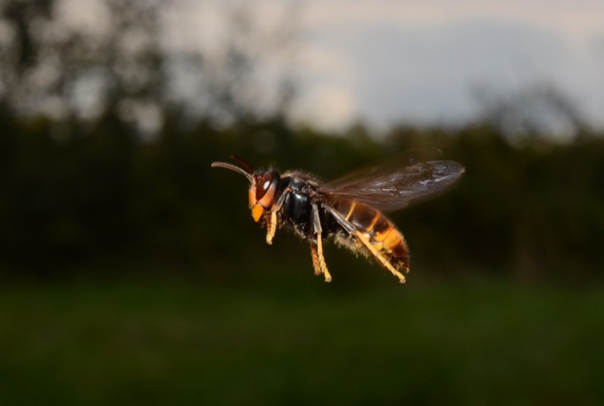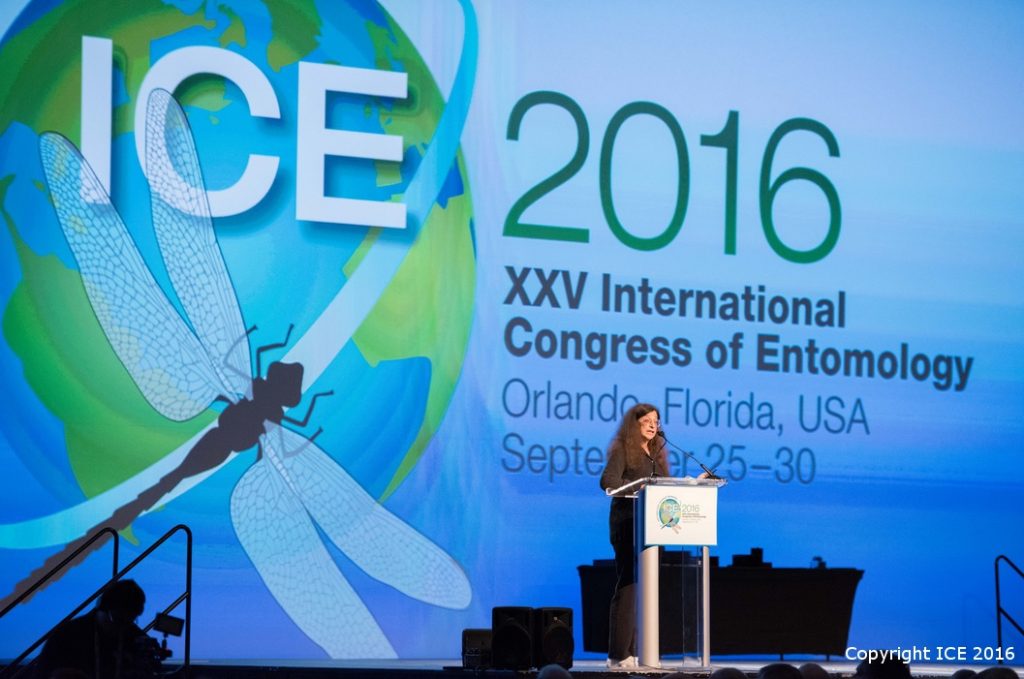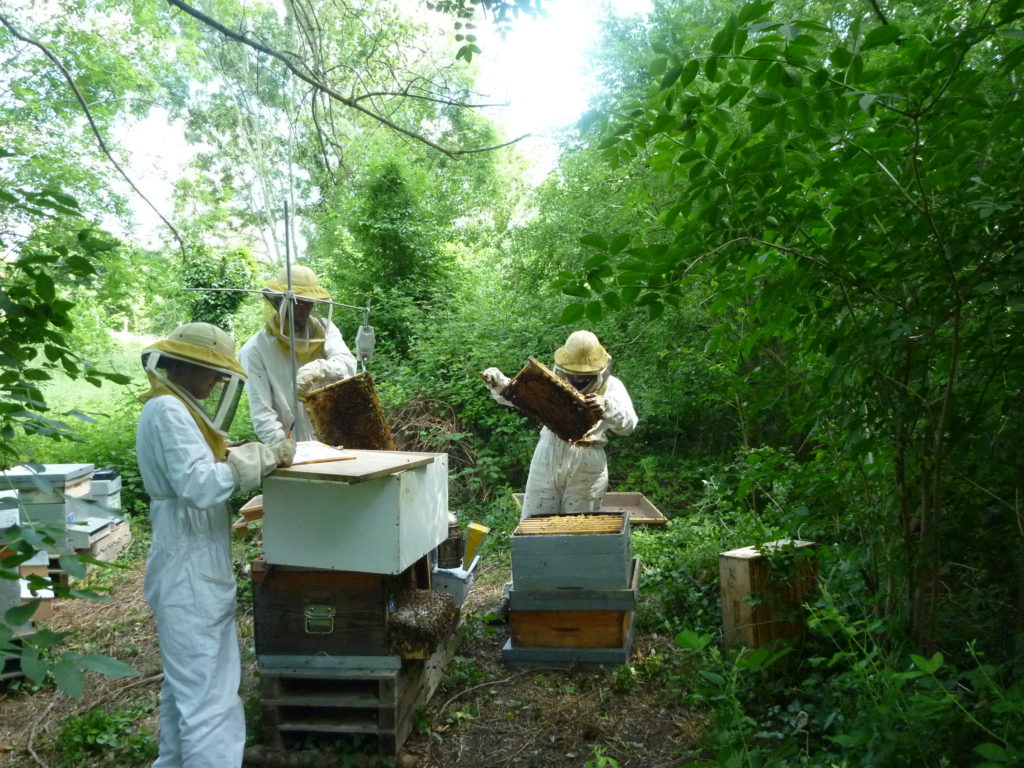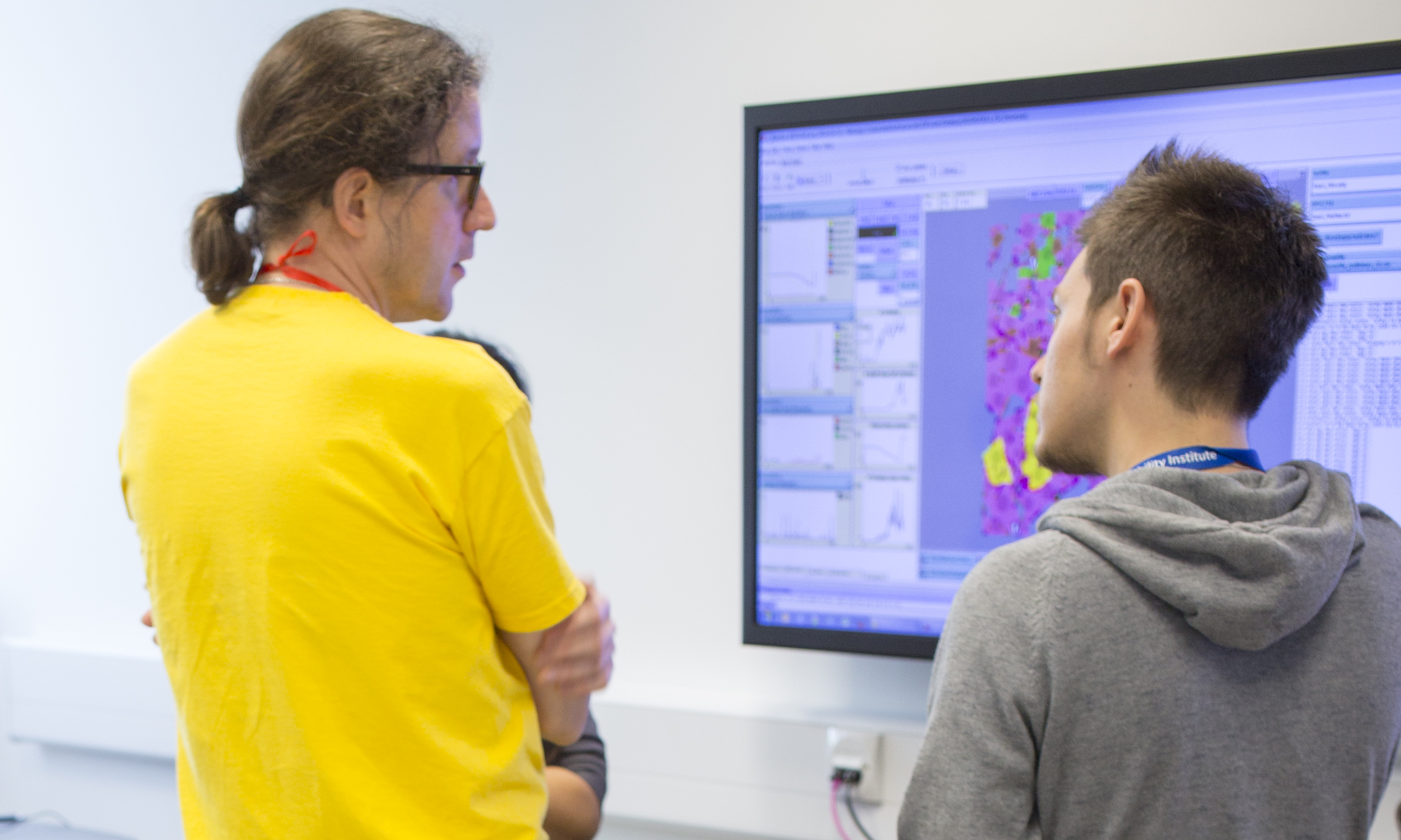NEWS
Latest news on BEEHAVE and the BEEHAVE suite of modelsBEEHAVERS profile- Dr Grace Twiston-Davies Post-doc UK
The way in which we manage our landscapes is having a significant effect on bumblebee survival. There have been recent worldwide declines in bumblebee abundance and species richness due to loss of habitat, loss of forage resources, emerging diseases, and the application of pesticides as well as other factors. Bumblebees are important pollinators of many wild flowers and crops in agricultural landscapes and therefore their decline raises serious concerns about the future of pollination for biodiversity and food security. This means that we need to understand what resources bumblebees require, spatially and seasonally (what they need, where they need it and when they need it), in order to make policy and land management recommendations for healthy and sustainable agricultural landscapes.
Grace’s work focusses on using BEESCOUT and Bumble-BEEHAVE in digitised landscapes that are as realistic as possible to investigate what we can do to increase bumblebee colony survival in farmland.
Grace describes her BEEHAVE model projects-
Creating realistic digital landscapes for BEESCOUT
WHAT: I have been working with Dr Matthias Becher and Prof Juliet Osborne on creating and applying Bumble-BEEHAVE, a model that represents many bumblebee colonies interacting in a realistic landscape. Using Bumble-BEEHAVE, we can investigate bumblebee colony survival in relation to the landscape scale resource availability of forage flowers. A major challenge has been how to represent complex and seasonally changing forage availability in a realistic way, this is because bumblebees feed on various flower species for pollen and nectar and these flower species differ in flowering date, location and in the quality and quantity of nectar and pollen they produce.
To simulate this in Bumble-BEEHAVE, we have developed a landscape represented as multiple layers of different floral resource species, initially implemented in BEESCOUT. Individual bumblebees then make decisions on what to forage for (nectar or pollen), where to forage and what species to forage on, depending on their past experience and the needs of the colony.
By characterising the landscape using this multi-resource layered method we can explore management and conservation scenarios such as the distribution, concentration and species composition of pollinator-friendly Countryside Stewardship options like wild flower margins.
WHERE: The Environment and Sustainability Institute (ESI) at the University of Exeter, UK
Using BEESCOUT and our new model Bumble-BEEHAVE to help make management decisions
WHAT: We are currently using BEESCOUT and Bumble-BEEHAVE to explore a range of pollinator friendly management options such as Countryside Stewardship in a variety of landscapes. In order to make bespoke management recommendations we are developing a network of local, regional and national users who can utilise Bumble-BEEHAVE to aid pollinator conservation and management decision making in their own landscapes.
Part of this network includes my current project translating Bumble-BEEHAVE and BEESCOUT to evidenced-based decision making at a regional scale by collaborating with Cornwall Area of Outstanding Natural Beauty in implementing their Pollinator strategy. Here we are working with farmers to create tailor-made management recommendations to enhance Cornwall’s landscapes for pollinator conservation and food production.
WHERE: The Environment and Sustainability Institute (ESI) at the University of Exeter and Cornwall Area of Outstanding Natural Beauty (AONB), UK
Grace Twiston-Davies is a Postdoctoral Research Associate at the University of Exeter’s Environment and Sustainability Institute (ESI) and is the NERC Knowledge Exchange Researcher on the project “Using bee models to support decision-making in the implementation of the National Pollinator Strategy in Cornwall”. She has specific expertise in applying computer based ecological analyses and models to evidence-based decision making and has previously collaborated with the National Trust during her PhD at the University of Reading to scientifically underpin their landscape-scale biodiversity restoration strategy and activities.
Using BEEHAVE to investigate the potential impact of Asian hornet predation on honeybees
BEEHAVE model developer Matthias Becher recently gave a talk to the Animal and Plant Health Agency (APHA) about the potential use of BEEHAVE to investigate the effect of the predatory Asian hornet on honeybee colony survival.
Matthias described how recent research (see below) indicates that Asian hornets not only kill more honeybees but drastically reduce the number of honeybees foraging, which can cause colony collapse. Asian hornets in particular are a concern as they are aggressive predators of many beneficial insects including honeybees and can cause losses in wild and managed bee colonies. Asian hornets only arrived in the UK last summer and have been successfully contained so far due to quick response from the National Bee unit. They were accidently introduced to France in or before 2004 and are now common across Europe.
APHA work to safeguard animal and plant health for the benefit of people, the environment and the economy, the recent invasion of the Asian Hornet in the UK raises serious concerns about the future health of our honeybee colonies which contribute significantly to the British economy. In understanding the behaviour of Asian hornets and their effect on honeybee colonies we may be able to quickly put in place management if outbreaks can’t be controlled.
Matthias gave a talk entitled “BEEHAVE: simulating multiple stressors in honeybees with an application to the Asian hornet (Vespa velutina)” which introduced BEEHAVE and its applications and then used the recent work by Dr Fabrice Requier predicting that hornets could increase the mortality of honeybee foragers by up to 80% and also reduce overall foraging to 0 in his work on the impact of the Asian hornet on honeybees in France.
More info on the Asian hornet research-
Arrived in France over 10 years ago, the Asian hornet (also known as the yellow-legged hornet) is an invasive insect in Western Europe. This hornet predates on honeybee foragers at the beehives entrance and is suspected to weaken the colonies before the winter. Dr Fabrice Requier and his team, assessed the risk of winter colony loss caused by the predation of yellow-legged hornet on honeybees by combining field observations and BEEHAVE simulations. They carried out large-scale visual observations and video surveillance automated to track the predator-prey relationship between the hornet and honeybees nearby colonies’ entrances. Then they gauged the number of catches of foragers and the foraging paralysis, which are two direct impacts of the hornet on honeybees, and infer those impacts in a model of bee colony dynamics. They further preformed simulations to assess the risk of colony failure related to the predation impacts. While empirical data showed negative impacts of the predation of the hornet to the foraging activity of honeybees, BEEHAVE simulations predicted that those impacts lead to winter colony loss, but only on previously weakened colonies.
Picture published in Requier, F., Chiron, G. & Ménard, M. (2016) Décrypter le vol des abeilles en 3D. Biofutur, 380, 48-53.
NetLogo version 6 is now available
NetLogo 6 is now available with some useful new features such as the auto-completion of code and the option of collapsing procedures. However, there are a few problems and current users of BEEHAVE will need to do a small edit to the model before running BEEHAVE in the new NetLogo version 6.
A major problem is also that BEEHAVE runs much slower in NetLogo 6, in our recent test it was four times slower than the Netlogo version 5.3.1. Additionally the “Undo” command does not work so beware! This means that we don’t currently recommend NetLogo 6 for the efficient use of BEEHAVE until some of these issues have been addressed.
If you do want to use this new version, an automated conversion is available but you may get an error message. What you need to do is remove the “Video” button (which is no longer supported by NetLogo 6) and automated conversion should be successful.

Click here for the new Netlogo 6 user manual and feature changes.
New project uses BEEHAVE models to help increase pollinators in Cornwall, UK
We have just started a new collaborative project between the University of Exeter’s Environment and Sustainability Institute (ESI) and Cornwall Area of Outstanding Natural Beauty (AONB). This project will support and develop the AONB’s new pollinator conservation initiative and extend the real-world impact of our bee behaviour and population models in informing landscape-scale management recommendations.
This is an excellent opportunity for us to provide a high profile case study to illustrate the range of potential applications for our bee models that simulate the behaviour, colony growth and survival of wild and managed pollinators in realistic landscapes. We will be building upon the previous success of BEEHAVE by utilising our recently published BEESCOUT model that simulates forage resources and bee landscape exploration, and the brand new Bumble-BEEHAVE model that simulates a population of multiple bumblebee colonies and species.
The ESI is a cutting edge interdisciplinary institute that focuses on solutions to the problems of environmental change and is based at the University of Exeter’s Penryn Campus in Cornwall, UK. Cornwall AONB covers nearly a third of Cornwall with nearly three quarters of it agricultural land, affording a unique opportunity to specifically target pollinator-friendly management. We are collaborating with Cornwall AONB to achieve their “Investing in Nature” policies outlined in their 2016-2021 Management Plan, by using our set of bee models as decision support tools and by providing the expertise to collaboratively, prioritise land areas which may have the biggest impact for wild pollinators.
Our aim is to extend the uses and impact of Bumble-BEEHAVE and BEESCOUT by investigating how potential landscape management (such as Countryside Stewardship Schemes for example) could affect the resources available to pollinators which effect their colony survival. We will then be able to make collaborative management recommendations with Cornwall AONB to enhance the Cornish landscape for bees, other pollinators, biodiversity conservation overall.
Dr Grace Twiston-Davies is the NERC Knowledge Exchange Researcher on the project “Using bee models to support decision-making in the implementation of the National Pollinator Strategy in Cornwall”. She is a Postdoctoral Research Associate at the University of Exeter’s Environment and Sustainability Institute (ESI) and has previously worked on the Bumble-BEEHAVE model as part of the BBSRC funded project “An integrated model for predicting bumblebee population success and pollination services in agro-ecosystems”.
New BEESCOUT model introduced at the International Congress of Entomology
Our latest model BEESCOUT (download here) has recently been showcased at the International Congress of Entomology and published in the Journal Ecological Modelling. BEESCOUT predicts landscape exploration behaviour of bumblebees and honeybees and is based on empirical movement data of bees tracked by harmonic radar (Osborne et al. 2013).
BEESCOUT is a significant step towards modelling the multiple stressors that operate at multiple scales that are causing worldwide pollinator declines. It is difficult and expensive to gather empirical data on landscape scale movement of pollinators. With BEESCOUT, we can estimate the probability of bees detecting food sources far beyond the scope of previous data and begin to understand what leads to colony failure. BEESCOUT will further enhance the use of the BEEHAVE honeybee model by allowing researchers to setup realistic landscapes and feed these into the BEEHAVE colony model.
Model developer Dr Matthias Becher showcased some of the applications of BEESCOUT at the International Congress of Entomology where thousands of invertebrate scientists from over 100 countries gathered to share their recent scientific findings in Orlando, Florida USA.
Matthias presented his research in the symposium for Modelling the movement of arthropods in agricultural landscapes hosted by Hazel Parry, Cate Paull and Nancy Schellhorn from CSIRO. He showed how the biological and behavioural differences between honeybees and bumblebees can drastically affect their ability to find food sources. Bumblebees may be more susceptible to changes in food source distribution and probability of detection because they have small colonies and no sophisticated recruitment unlike honeybees with large colonies and recruitment to specific food sources via waggle dances. This may be an important consideration for pollinator targeted conservation and when assessing the impact of landscape change on pollinator communities.
BEEHAVERS profile- Prof. Dr. Volker Grimm, World Leading Expert on Ecological Modelling
Prof. Dr. Volker Grimm is a world renowned Scientist at the Department of Ecological Modelling at the Helmholtz Centre for Environmental Research–UFZ in Leipzig, Germany, and is Professor for Theoretical Ecology at the University of Potsdam. With over 14,000 citations (Google Scholar) of more than 200 publications, he is a world leading expert on ecological modelling and has co-authored both the first monograph and first textbook on individual-based/agent-based modelling. Volker has worked on a plethora of different model systems and species, but BEEHAVE may have been the most ambitious and complex modelling project that he has been involved in so far.
Volker describes working with BEEHAVE;
“Usually I am quite skeptical of complex models, as often their design is ad hoc, they are not well tested, and very hard to understand. But I very much like BEEHAVE, which certainly is the most complex I have been involved with (but there are much more complex models out there). I think BEEHAVE is a fantastic scientific tool because I had the chance to observe how careful Matthias Becher developed it. He would only add a new element after the current version had been thoroughly tested. He based the design on our literature review of existing models and on existing data and knowledge. The model is well documented and implemented in an open-source software, NetLogo, that comes with a graphical interface and a simulation tool (“BehaviorSpace”) which facilitates exploration of the model in a systematic way.”
Model Development Communication and Validation
What: Volker’s main research focus is on optimising model development, communication, and validation. He has been involved in modelling a broad range of plant and animal populations and communities. Using agent-based models, he tries to link behavior to population and community dynamics and to develop a mechanistic basis for resilience theory.
Where: Department of Ecological Modelling at UFZ in Leipzig, Germany.
Development and quality assurance of BEEHAVE
What: He has been involved in the review of current honeybee models that was the basis of the BEEHAVE project, and provided internal reviews and expert advice on the development, implementation, testing, and application of BEEHAVE. In a PhD project carried out in his research group by Juliane Horn, the effect of forage availability in artificial and real landscapes was explored using BEEHAVE.
Where: Department of Ecological Modelling at UFZ in collaboration with the Environment and Sustainability Institute (ESI) of the University of Exeter UK.
Prof. Dr. Volker Grimm is Biologist and Physicist and has worked at the Department of Ecological Modelling at the Helmholtz Centre for Environmental Research–UFZ in Leipzig, Germany since 1992, and he is a Professor for Theoretical Ecology at the University of Potsdam. Volker Grimm has a PhD in Physics and a Diploma Degree in both Biology and Physics from the University of Marburg, Germany.
BEEHAVERS Profile- Dr Fabrice Requier Post-doc in Argentina
Fabrice studies the many stressors that bees face in human-dominated landscapes. These include pesticide exposures, lack of flower resources, parasites, pathogens and climate changes. He is particularly interested in the adaptive responses of bees to those stressors. Currently focusing on honeybees, he uses BEEHAVE to predict colony traits such as colony survival rate and honey harvests in a variety of environmental conditions. Through this work his aim is to understand how different stressors act in combination and together to lead to colony failure.
Fabrice is involved in many projects that cover the practical applications of BEEHAVE to the technical calibration of BEEHAVE, right through from hive management to landscape management;
Calibrate BEEHAVE with empirical data.
What: Fabrice worked for two-years as Postdoctoral researcher in France. Here he developed a method to calibrate the BEEHAVE model. He compared model predictions and empirical observations (the ECOBEE monitoring in central-western France) and utilised these data on landscape, weather and beekeeping practices to apply the predictions of BEEHAVE.
Where: Pollination and Bee Ecology lab (INRA, of Avignon, France) in collaboration with the Environment and Sustainability Institute (ESI) at University of Exeter.
Simulate multiple stressors in BEEHAVE.
What: He also simulated multiple stresses with BEEHAVE in order to identify the combination “at risk” that lead to colony failure. In BEEHAVE, he implement, all the stresses that occur in the bee colony environment (using the example of the ECOBEE monitoring in France), and assessed which combination of stressors threaten the colonies and at which thresholds. A particular application was intended for the risk assessment of a new predator of bees in France, the yellow-legged hornet Vespa velutina.
Where: Pollination and Bee Ecology lab (INRA of Avignon, France) in collaboration with the ESI at the University of Exeter.
Conduct landscape-scale simulations of BEEHAVE.
What: Currently in his new Postdoctoral position in he is managing a volunteer-based survey of honeybee colonies, to enable large-scale recording of bee colony traits, environmental conditions and the occurrence of parasites and pathogens to provide large-scale predictions. Starting this approach in Argentina, he is particularly interested in the national climate gradient to assess the climate dependency of combined stresses effects on bee colony failure.
Where: Argentina at IRNAD-UNRN (2016-2018), the “Instituto de Investigación en Recursos Naturales, Agroecología y Desarrollo Rural” and the “Universidad Nacional de Río Negro” (UNRN)
Use BEEHAVE to predict crop pollination service.
What: Fabrice is also developing a new BEEHAVE application assessing the number of bee colonies to place in crop to insure pollination service.
Where: Argentina at IRNAD-UNRN, in collaboration with INRA (France).
Running BEEHAVE with R.
What: To facilitate the used of BEEHAVE, he is working on a R-package “Beehave” to run BEEHAVE (created with NetLogo) with R, i.e. the more common statistical free open-source software. This R-package “Beehave” will aim to simulate a large number of BEEHAVE simulations, with different functions enable to calibrate the model (input of virtual or real landscape maps, weathers, and beekeeping practices) and to simulate multiple stresses.
Dr. Fabrice Requier is an ecologist and works currently in a postdoctoral position in Argentina at IRNAD and UNRN. Using both experimental data and BEEHAVE, his research focuses on the effects of global environmental change on bees. Fabrice has a PhD in Ecology from the Centre d’Etudes Biologiques de Chizé – and INRA Le Magneraud (France) and an MSc in Biodiversity, Ecotoxicology and Ecosystems and a BSc in Biology from the University of Metz (France).
The Bee group Exhibit BEEHAVE at the ESI showcase
By Tim Penny
In the last week of May 2016, the BEEHAVE group had a great opportunity to display our models during the Environment and Sustainability Institute (ESI) showcase. This was a two-day review of representative projects conducted by ESI staff encompassing the range of high impact and locally relevant research engaging Cornish stakeholders. The event was both an important evaluation of ESI and a chance for everyone working at the institute to learn more about the projects of other research groups.
Juliet, Matthias, and Grace presented the models to the independent external reviewer, Professor Dame Georgina Mace of University College London, with a live demonstration of BEEHAVE and BEESCOUT and an impact video containing messages from the various stakeholders .
Additionally, a room was set aside for the group to demonstrate BEEHAVE, BEESCOUT, and BEEMAPP to other researchers in ESI. The models were displayed on large screens with the whole group on hand to run BEEHAVE through different scenarios of Varroa infestation (a disease carrying mite) and beekeeping interventions and to discuss the project and its applications to science and agriculture.
The showcase was a huge success and very enjoyable. The models are perfect for these occasions; they are easy to use and understand, as anyone can run their own scenarios through the options on the interface tab. Everybody had a lot of fun and asked some very interesting questions. It was an excellent opportunity for everyone to mingle and discuss their research with each other and for us to introduce the models to so many new people.
Photo of ESI Showcase © Matt Jessop
Tim Penny is a Research Assistant on the BBSRC funded project “An integrated model for Predicting bumblebee population success and pollination services in agro-Ecosystems”. He has an MSc in Ecology, Evolution and Conservation from Imperial College London and a BSc in Animal Behaviour from the University of Sheffield.
Header photo © Pete Kenedy












